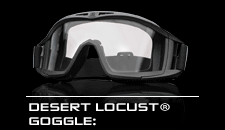National Wildlife Refuges Offer Special Hunts
Here is an adventure that I am surely going to have to try to get in on! This fall, Northwest Florida offers a unique "big-game" hunt on the island of St. Vincent NWR.
For hunters looking to rough it a bit more and go after some truly big game, the 12,490-acre, undeveloped barrier island of St. Vincent NWR in Franklin County is where the hunt's on for the enormous, imported sambar deer. These reddish-brown deer, which are actually in the elk family, are native to Southeast Asia and were introduced on the island in 1908. They can measure 6 feet tall at the shoulder and weigh more than 700 pounds in Florida.
You also can harvest wild hogs on this hunt, but it must be with bows or muzzleloaders. Hunters with a Disabled Crossbow Permit may use crossbows.
Image Credit: David Behrens
Stags Battleing!
The primitive-weapon sambar deer/wild hog hunt takes place Dec. 2-4, and there are 200 permits available, costing $25. Hunters who drew this hunt last year aren't eligible to apply this year.The bag limit on sambars is two (male or female), and there is no bag limit on hogs.
You can get to St. Vincent Island only by boat. If you don't have one, you can contact the local chamber of commerce for a list of boat captains who will ferry you to and from the island for a fee.
The island has no electricity, and generators are not allowed, so it's all about primitive camping for three days. Hunters may have a small campfire, but only using wood they take with them or dead wood they find on the ground.
Take a bicycle, unless you plan to walk everywhere. If you do harvest any game, however, U.S. Fish and Wildlife Service staff will pick up you and your animal in one of their trucks. That's the only way you're catching a ride in a motorized vehicle, unless you're a disabled hunter. Those hunters receive special accommodations and transportation to and from their hunting spots.
Sambars feed on aquatic vegetation, so you're not likely to find them in drier, upland habitat. It's best to set up in marshes. Sambar prefers staying in the forested hill-sides preferably near cultivation. They are almost nocturnal, feeding mainly at night and retiring by daybreak. Their diet is mainly grass, leaves, various kinds of wild fruit. These animals have a life expectancy ranging between 16 - 20 years.Shooting hours for this hunt end at 3 p.m. each day.
All hunt permits are nontransferable. An adult must accompany permit holders under age 16 on all of these hunts, but that person may not hunt. Mobility-impaired hunters can bring one guest who may hunt, but both hunters must share a single person's bag limit.
Up to five hunters can choose to apply as a group. To apply as a group, one person must first apply as group leader, indicate the creation of a group and enter the hunt choice for the group. The group leader receives a group number (prints on receipt), which group members must have. Each group member must then submit a $5 application and indicate the group number.
To apply, fill out the 2010-2011 NWR worksheet at MyFWC.com/Hunting, select text under "Limited Entry Hunts" and enter the four-digit hunt number for the requested hunt date. Submit completed applications at http://www.fl.wildlifelicense.com/, county tax collectors' offices or retail outlets that sell hunting and fishing supplies, through 11:59 p.m. June 10. (OOPS!!! I'm a little too late!)
The FWC issues these permits by a random drawing that takes place in early August. You may apply only once for each hunt. The application fee is $5. If you submit your application at a license agent or tax collector's office, be sure to get your worksheet back from the clerk, along with your receipt.
You can check the results of the drawing online at MyFWC.com/Hunting; click on "Limited Entry Hunts" and look for the link "Check Permit Availability and Drawing Results."










